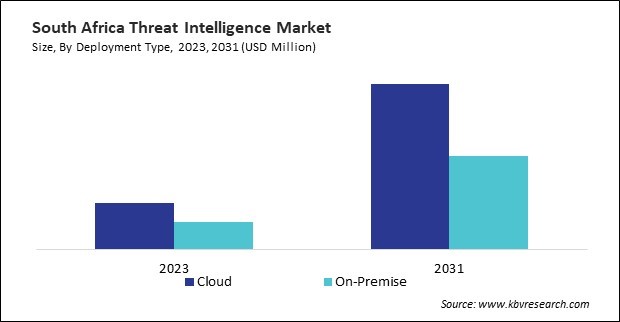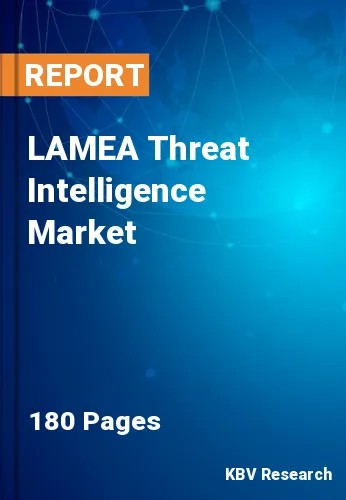The Latin America, Middle East and Africa Threat Intelligence Market would witness market growth of 16.2% CAGR during the forecast period (2024-2031).
The Brazil market dominated the LAMEA Threat Intelligence Market by Country in 2023, and would continue to be a dominant market till 2031; thereby, achieving a market value of $921.6 million by 2031. The Argentina market is showcasing a CAGR of 17.1% during (2024 - 2031). Additionally, The UAE market would register a CAGR of 15.8% during (2024 - 2031).

Incorporating intelligence into risk management frameworks is not merely a trend but a necessary shift in how companies approach their cyber defenses. According to a report by the Cybersecurity and Infrastructure Security Agency (CISA), businesses that use intelligence can identify and respond to threats 60% faster than those that do not. This capability is crucial for prioritizing security investments—ensuring that resources are allocated to the most significant threats and optimizing overall security posture.
Moreover, organizations can develop more robust and effective risk mitigation strategies by leveraging detailed insights from intelligence. For instance, if intelligence indicates a rise in phishing attacks targeting certain industries, companies within those sectors can enhance their email security measures and conduct targeted employee training to prevent such attacks.
Governments across LAMEA are prioritizing national security in the digital age. This intelligence is crucial in combating cyber threats and protecting critical infrastructure. According to NETSCOUT's 2023 Cyber Threat Intelligence Report, Brazil experienced 357,422 DDoS attacks, with a significant focus on wireless telecommunications carriers and data processing services. The largest attack recorded had a bandwidth of 775.88 Gbps, emphasizing the country's scale and severity of cyber threats. In Saudi Arabia, the rapid digital transformation and the strategic importance of critical infrastructure are key factors driving the demand for intelligence. The Saudi National Cybersecurity Authority (NCA) has reported a substantial increase in cyber threats, particularly targeting the oil and gas sector, a critical component of the country's economy. Therefore, as regional organizations continue to embrace digital technologies, the demand for intelligence solutions is expected to increase further in the coming years.
Free Valuable Insights: The Worldwide Threat Intelligence Market is Projected to reach USD 38.9 Billion by 2031, at a CAGR of 13.9%
Based on Organization Size, the market is segmented into Large Enterprises, and Small & Medium Enterprises. Based on Deployment Type, the market is segmented into Cloud, and On-Premise. Based on Type, the market is segmented into Solution (Security Information & Event Management, Risk Management, Identity & Access Management, Log Management, Incident Forensics, and Others), and Services (Professional Services, and Managed Services). Based on Vertical, the market is segmented into Telecom & IT, BFSI, Energy & Utilities, Healthcare, Manufacturing, Transportation & Logistics, Retail, Government, and Others. Based on countries, the market is segmented into Brazil, Argentina, UAE, Saudi Arabia, South Africa, Nigeria, and Rest of LAMEA.
By Organization Size
By Deployment Type
By Type
By Vertical
By Country
Our team of dedicated experts can provide you with attractive expansion opportunities for your business.

